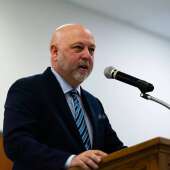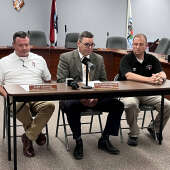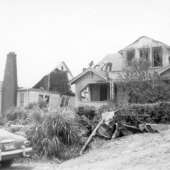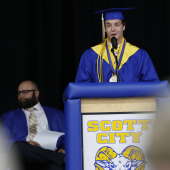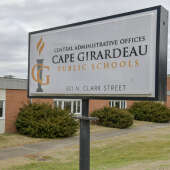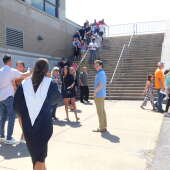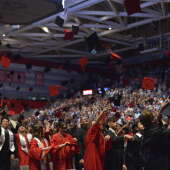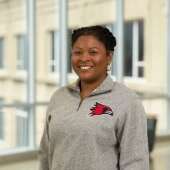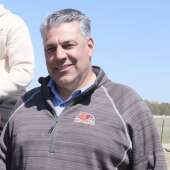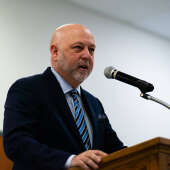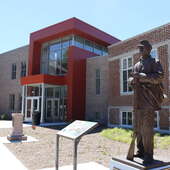SE MO REDI to host industrial strength assessment
As a management consultant to SE MO REDI, Shad Burner is helping with a search to bring the next big industry to Southeast Missouri. The major question is which industry to target.
Southeast Missouri Regional Economic Development, Inc., or SE MO REDI, is a Cape Girardeau-based development group seeking to grow the regional economy of Southeast Missouri. SE MO REDI was formed from the Cape Girardeau Area MAGNET economic development group in 2022, with a greater focus on regional cooperation.
Burner said SE MO REDI marks the first time three counties (Cape Girardeau, Perry and Scott) have worked together in this capacity.
“While we are often working together,” Burner said, “when a business comes in and wants to move here, we’re borrowing labor force and all these things, so we need to be in alignment.”
Group members decided to launch a feasibility study focused on bringing major industries into the region.
“We really have to focus. We don’t have unlimited resources, time, land [or] energy,” Burner said. “We need to narrow down and determine what are the best industries we can really focus on that bring the most value to the company and the company brings the most value to the region.”
It won’t be a straightforward task, because many people have different ideas on which industries would best suit the region.
SE MO REDI has partnered with Camoin Associates out of Saratoga Springs, New York, for economic development consulting services.
“They’ve done a lot of feasibility studies, market analyses and things like that all over the country with different communities,” Burner said of Camoin. “[They have] really good references, as well. They’ve worked with some other folks in the state, and we were able to call, check on that and get the thumbs up.”
The group received $126,000 in grants to conduct the study — The Economic Development Administration and Delta Regional Authority both contributed $63,000 in grants.
Developing a history
When the Cape Girardeau Area MAGNET began in the early 1990s, it was funded entirely through public sector partners. Over the last year, Burner has helped it grow to 29 partners, a mix of private and public.
Each company, be they in the financial, education or construction fields, views themselves as a regional entity, Burner said.
Their contributions have doubled SE MO REDI’s budget from $250,000 to more than $500,000 a year, which will help with attracting a full-time president and chief executive officer to lead the organization.
Burner said a new CEO would ideally be in place sometime in May or June 2024. SE MO REDI partnered with Waverly Partners, an executive search firm in Wayne, Pennsylvania, to compile a list of candidates to interview.
Aaron Panton, regional president of The Bank of Missouri and head of a nine-member CEO search committee, said the CEO would ideally have strong leadership and communication skills with prior economic development experience.
“My hope would be that the next leader comes in and really takes the time to understand our region, understand the strategic plan that the board has established and start building relationships with the stakeholders from across the region,” he said.
Continual growth is one of the goals for SE MO REDI, not just as a group itself, but for the entire economic scope of Southeast Missouri, Burner said.
If the region can improve economically, it can attract greater interest and investment from the Missouri Legislature, and acquiring large-scale industrial activity might just be the ticket.
Ready for growth
In December 2023, the group voted on a strategic plan, with every section of it aligning with a five-member working group that first met in March 2024.
The working groups focus on branding, workforce, business recruitment and retention, regionalism and entrepreneurship, respectively.
Much of the public is not aware of the organization’s transition from MAGNET, Burner added, and as SE MO REDI shares more information about upcoming projects, he said this would be the ideal time to grow the organization’s social media presence.
“We all recognize we can do more as a region to proactively recruit businesses, but we just want to make sure we’re putting our time and energy in the right places to do that,” he said.
Despite the impact the industry search could have, Burner said it’s only a small part of what SE MO REDI is involved in.
“Really, it gets a lot of headlines, but it’s a smaller component,” he said. “Most of our jobs and growth of our economy will happen with our existing industry.”
According to the Missouri Economic Research and Information Center, a 2023 economic report found that a 13-county Southeast Missouri region stretching from the bottom of the Bootheel to Ste. Genevieve County had some 157,000 employees.
Just shy of 30,000 of these workers were employed in the health care and social assistance field, with the next highest industries being manufacturing and retail trade at around 17,500 workers apiece.
Much of what SE MO REDI focuses on is helping existing businesses thrive. Inviting new industries and businesses is always helpful, but even smaller companies adding jobs helps bolster the economy, Burner said.
The group can connect companies with incentives for hiring workers, and even a single worker getting a job adds more to the economy than if they were otherwise not in the workforce.
Burner pointed out how SE MO REDI does not create jobs. It’s the private sector that does that, and SE MO REDI is just there to encourage such growth by bringing in new companies or helping existing ones expand.
“Trying to connect all those dots, making it easy for companies to expand and grow – really, that’s at the heart of what we do,” Burner said.
The industrial feasibility study will play a major part in that. Whatever business or groups of businesses are brought in, they will become a major part of the local economy.



